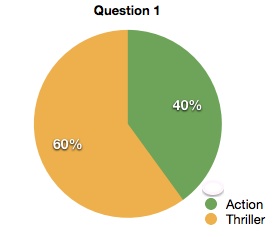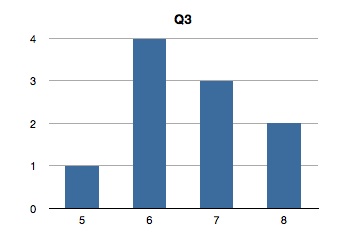I have created a storyboard which shows the individual frames we wish to take, and also identifies the plot of the opening sequence.

Shot #01
A mid-shot of the alarm clock next to Jack’s bed surrounded by darkness, in silence. This will be a still frame of the minute changing. By having the minute change it highlights that the night is long and it is still only an early hour. The darkness and the silence will emphasise that the night can be lonely, and unpredictable, foreshadowing the later events of the sequence.

Shot #02
A mid-shot of Jack laying in bed unable to sleep. This shot will start in darkness and Jack will turn the light on. As he does so, ‘In The Morning’ by ‘The Coral’ will begin playing. He will lay in his bed and appear restless. This will show that he is unable to sleep and is annoyed due to this. The music beginning at this point will appear ironic, as the lyrics “shut the bedroom window in the morning , go to the shop, make plans to be leaving in the morning” are inappropriate at such an early time in the morning.

Shot #03
A mid-shot of Jack getting out of bed and stretching, followed by him putting his joggers on. Jack stretching plays along with the irony of the lyrics, as he appears to be getting up for the day, when really he is just getting up to pass the time. The early hour and the irony will make Jack begin to appear vulnerable already.

Shot #04
A long-shot of Jack heading downstairs. The lights are on upstairs, but off downstairs, so he appears to be heading into the darkness; into the unknown.

Shot #05
A close-up low-angle of Jack’s feet as he walks. We thought this shot was particularly successful when used in our preliminary task, so we’ve decided to draw it into our opening sequence. The shot of his feet will emphasise that the audience are unaware of what lies ahead for Jack and the low angle help play Jack as a vulnerable character.

Shot #06
A close-up of Jack opening the door of the fridge. This shot will be used mainly for our beneift as the creators of the sequence; it will give us the chance to prove that we can use match on action in the editing stages successfully. It also adds more visual creativity and keeps the sequence interesting to watch.

Shot #07
A mid-shot of Jack from a point of view which lies internal to the fridge. This is the shot we initially discussed and decided we wanted to include at some point because it’s unique; it highlights individuality and makes the sequence more visually creative. It also lets the audience see what Jack is doing much more clearly than an external shot. It allows the audience to see the annoyance on his face and lets them see that he leaves the frige without taking anything, further emphasising his annoyance.

Shot #08
An over-the-shoulder shot of the note on the door as Jack closes the fridge. This shot includes a zoom. The camera will zoom in on the note to really make the audeince aware of the message “I’ve got your son”. The zoom will emphasise the danger, and creates a more dramatic effect when Jack pulls the note from the fridge; the shot is left empty. It is during this frame in which we plan to include a stunned sound effect, a wind down of ‘In The Morning’ before ‘Hysteria’ kicks straight in. The drones of the introduction emphasise the danger of the message.

Shot #09
A high-angle over-the-shoulder shot of Jack studying the note. The high angle will make Jack appear vulnerable to such a terrifying message, and allows the audience more time to intake what’s happening. During this frame Jack scrunches up the note and throws it down to let the audience know that he wont stand for it.

Shot #10
An extreme close-up of Jack’s eyes. This will show the audience very clearly the expression on his face; they’re able to see the panic in his eyes as he tries to piece information together. The music is building at this point creating tension.

Shot #11
An over-the-shoulder mid-shot of a hooded figure outside the window. The music continues to build and Jack and the audience see the disguised figure. The audience subconsciously assume that the hooded figure left the note which is what we intend them to assume as it is true.

Shot #12
A long-shot of Jack running out of the house. As Jack begins to run, the bass of the music drops, which creates a sense of sudden terrifying drama, and emphasises the speed of which Jack is running in order to catch the figure.

Shot #13
An over-the-shoulder shot from behind Jack as the chase begins. The music is tense which helps to build tension and suspense and the hooded figure can be seen fleeing from the area at high speed, proving his guilt.

Shot #14
A reverse over-the-shoulder shot of Jack during the chase. This shot will have the hooded figure in the foreground, which builds tension as the audience are tricked into believing that they are in danger as they are close to the figure. During this frame we need to be careful not to show the figure’s face as this will reveal his identity and the suspense will be broken.

Shot #15
A point of view long-shot of the chase. We plan to hide the camera in a hedge or something similar we can work with. This will create a sense of the audience ‘spying’ on the chase, as if they’re intruding on the action. The frame will show Jack and the figure running past the camera at high speed.

Shot #16
A long-shot of the hooded figure hiding round a corner preparing to hit Jack and Jack running towards the camera. This shot shows both parties and enhances dramatic irony, which is when the audience has more knowledge than a character. In this case the audeince knows that the hooded figure is hiding around a corner waiting to hit Jack when he turns the corner. As Jack is hit, we will add a sound effect in to really dramatise the effect of the hit, and the music will stop, leaving silence and a moment of darkness onscreen.

Shot #17
A long-shot of the hooded figure dragging Jack off-screen. Because he is being dragged off screen, it creates panic for the audience, as they do not know where he is being taken. The silence is terrifying and continues to add to the suspense.

#Shot 18
A close-up of Jack’s hands tied up with rope. This shot shows to the audience that Jack has been captured by the figure, and is being held captive for reasons unknown.
The opening sequence will then end. We have decided to finish it here because we believe it has successfully completed its purpose; it has established genre, setting, characters and the narrative, and leaves the audience asking themselves the following questions:
-
who is the hooded figure?
-
why does he have Jack’s son?
-
where is Jack tied up?
-
why is he tied up?
-
why is the figure playing ‘games’ with Jack?
-
what happens next?
The most important thing is that the audience are wanting to continue watching, and we believe after seeing this much of the film, they will want to find out more.
However, this storyboard is very basic, and our final sequence may be slightly different. We may decide to add more shots in or alter some slightly. Currently we have no dialogue but we are thinking of adding some in, perhaps one line from Jack such as “who are you?” as he is tied up.
























.jpg)






